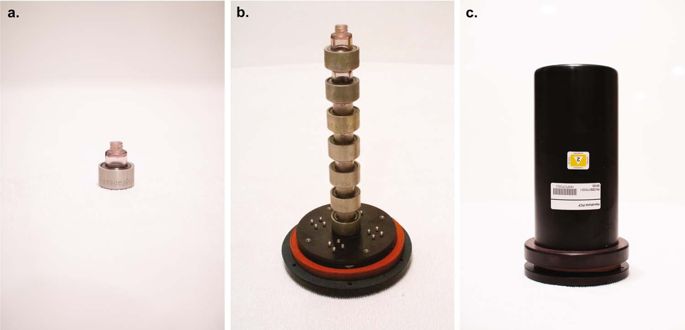npj Microgravity ( IF 4.4 ) Pub Date : 2019-12-02 , DOI: 10.1038/s41526-019-0090-3 Paul Reichert , Winifred Prosise , Thierry O. Fischmann , Giovanna Scapin , Chakravarthy Narasimhan , April Spinale , Ray Polniak , Xiaoyu Yang , Erika Walsh , Daya Patel , Wendy Benjamin , Johnathan Welch , Denarra Simmons , Corey Strickland

|
Crystallization processes have been widely used in the pharmaceutical industry for the manufacture, storage, and delivery of small-molecule and small protein therapeutics. However, the identification of crystallization processes for biologics, particularly monoclonal antibodies, has been prohibitive due to the size and the flexibility of their overall structure. There remains a challenge and an opportunity to utilize the benefits of crystallization of biologics. The research laboratories of Merck Sharp & Dome Corp. (MSD) in collaboration with the International Space Station (ISS) National Laboratory performed crystallization experiments with pembrolizumab (Keytruda®) on the SpaceX-Commercial Resupply Services-10 mission to the ISS. By leveraging microgravity effects such as reduced sedimentation and minimal convection currents, conditions producing crystalline suspensions of homogeneous monomodal particle size distribution (39 μm) in high yield were identified. In contrast, the control ground experiments produced crystalline suspensions with a heterogeneous bimodal distribution of 13 and 102 μm particles. In addition, the flight crystalline suspensions were less viscous and sedimented more uniformly than the comparable ground-based crystalline suspensions. These results have been applied to the production of crystalline suspensions on earth, using rotational mixers to reduce sedimentation and temperature gradients to induce and control crystallization. Using these techniques, we have been able to produce uniform crystalline suspensions (1–5 μm) with acceptable viscosity (<12 cP), rheological, and syringeability properties suitable for the preparation of an injectable formulation. The results of these studies may help widen the drug delivery options to improve the safety, adherence, and quality of life for patients and caregivers.
中文翻译:

派姆单抗微重力结晶实验
结晶过程已广泛用于制药工业中,用于小分子和小蛋白治疗剂的制造,储存和递送。但是,由于生物制剂尤其是单克隆抗体的结晶过程的大小和整体结构的灵活性,其鉴定一直是令人望而却步的。利用生物制剂结晶的益处仍然是一个挑战和机会。默克夏普和圆顶公司(MSD)在与国际空间站合作研究实验室(ISS)国家实验室进行的结晶实验与pembrolizumab(Keytruda ®)参加了ISS的SpaceX-商业补给服务10任务。通过利用微重力效应,例如减少沉降和最小的对流,确定了以高收率产生均一单峰粒度分布(39μm)的晶体悬浮液的条件。相反,对照地面实验产生的晶体悬浮液具有13和102μm颗粒的异质双峰分布。此外,与可比较的基于地面的晶体悬浮液相比,飞行晶体悬浮液的粘度更低,沉淀更均匀。这些结果已被应用到地球上的晶体悬浮液的生产中,使用旋转混合器减少沉淀和温度梯度以诱导和控制结晶。使用这些技术,我们已经能够生产出具有可接受粘度(<12 cP),流变学和可注射性的均匀结晶悬浮液(1-5μm),适合制备注射剂。这些研究的结果可能有助于拓宽药物的选择范围,以提高患者和护理人员的安全性,依从性和生活质量。









































 京公网安备 11010802027423号
京公网安备 11010802027423号